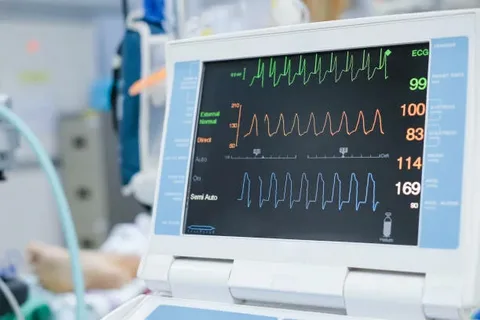In today’s hospitals, where every second matters and patient safety is paramount, the demand for real-time health data has never been higher. Enter telemetry patient monitoring—a transformative approach that delivers round-the-clock monitoring without compromising patient mobility or comfort.
As the healthcare landscape continues to evolve, hospitals and clinics are increasingly under pressure to do more with less—more patients, more complex cases, and more expectations from both regulators and the public. In this environment, efficiency and reliability in patient care aren’t just desirable; they’re critical. And that’s where telemetry becomes indispensable.
The Basics: What Is Telemetry Monitoring?
Telemetry in healthcare refers to the use of wireless technologies to collect and transmit vital physiological data. With telemetry patient monitoring, clinicians can observe critical metrics like heart rate, respiration, blood pressure, and oxygen saturation remotely and continuously. These systems are particularly indispensable in cardiology wards, post-surgical recovery units, intensive care units (ICUs), and emergency departments.
Unlike traditional bedside monitors, telemetry enables patients to move freely while staying connected to a centralized monitoring station. This not only improves comfort and reduces hospital-related stress, but it also minimizes risks linked to extended bed rest, such as deep vein thrombosis or pressure ulcers.
Why Hospitals Are Shifting to Telemetry
The appeal of telemetry patient monitoring goes beyond convenience. It directly contributes to better patient outcomes in several key ways:
- Proactive Intervention: Because telemetry systems provide real-time alerts, staff can quickly respond to early signs of deterioration, such as arrhythmias or respiratory distress.
- Streamlined Workflow: Monitoring multiple patients from a centralized location reduces staff fatigue and ensures no warning sign goes unnoticed, allowing clinical teams to prioritize and respond more efficiently.
- Customized Care: Advanced telemetry devices offer customizable alert thresholds, which can be adjusted for high-risk patients, ensuring more accurate monitoring and fewer false alarms.
- Enhanced Safety: Telemetry reduces unnecessary exposure to pathogens in high-risk areas by minimizing physical checks, making it especially relevant in infectious disease units and during pandemics.
Implementation Best Practices
Adopting a telemetry solution isn’t just about investing in hardware—it’s about building a system that fits seamlessly into your facility’s daily operations. When considering telemetry systems, hospitals should evaluate:
- Compatibility with electronic health records (EHRs)
- Wireless signal range and reliability across multiple floors or wings
- Battery life and portability for devices worn by patients
- Data encryption standards and HIPAA compliance for patient data security
Staff training is equally critical. Nurses, physicians, and support personnel need to know not just how to operate the equipment, but how to interpret telemetry readings and respond appropriately. Integration into existing alert systems and nurse-call frameworks is essential for ensuring a smooth workflow.
The Broader Impact on Healthcare
Telemetry patient monitoring doesn’t just improve patient safety—it optimizes the use of hospital resources. It allows fewer nurses to effectively monitor more patients, reduces unnecessary transfers to higher-acuity units, and shortens the average length of stay by catching complications early.
In surgical recovery, telemetry can detect signs of internal bleeding or cardiac events before symptoms become visible. In emergency rooms, it can help triage patients more accurately by flagging silent but serious abnormalities. Even in general care units, patients with pre-existing conditions can be watched more closely without overwhelming staff.
Expanding the Boundaries of Care
One of the most exciting developments in healthcare is the shift toward remote and home-based monitoring. With advances in wearable sensors and cloud integration, telemetry patient monitoring is poised to play a vital role beyond the hospital setting.
Imagine a cardiac patient being discharged with a lightweight wearable device that continues to transmit data to their care team. Such continuity of care can significantly reduce readmission rates, detect early warning signs of relapse, and provide peace of mind for patients and providers alike. This technology also opens the door to better chronic disease management, post-operative recovery, and elderly care at home.
For facilities looking to stay ahead of the curve, investing in a forward-thinking system like telemetry patient monitoring from THE BIOMED GUYS ensures you’re equipping your staff with dependable tools and enhancing your quality of care. Their systems are designed to deliver clinical-grade accuracy with user-friendly interfaces, making them ideal for busy hospital environments.
Final Thoughts
In a healthcare environment driven by precision, speed, and patient-centered care, telemetry patient monitoring is no longer optional—it’s essential. From improved clinical responsiveness to better workflow and patient mobility, telemetry provides the insights and flexibility today’s hospitals demand.
As the demand for smarter, more connected care continues to grow, telemetry will likely become the standard—not just in hospitals but across the entire continuum of care. For healthcare providers seeking to lead rather than lag, now is the time to invest in telemetry as a foundational pillar of modern patient care.


